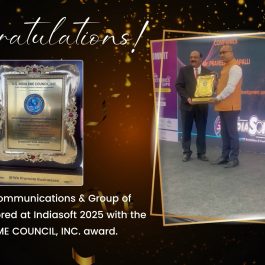6 min read

The essential steps to putting an efficient content marketing plan into practice will be discussed in this blog post. Every phase is essential to the success of content marketing campaigns, from planning and research to creation, promotion, and analysis. Knowing these phases will assist you in creating and carrying out a thorough content marketing strategy that produces noticeable outcomes, regardless of your level of experience.
Table of Contents
An Overview of Content Marketing Strategy
Nowadays, any effective digital marketing plan must include content marketing. It entails producing and disseminating content optimization that is worthwhile, timely, and consistent in order to draw in and hold onto a target audience. Prior to delving into the crucial phases, let us comprehend the significance and advantages of content marketing.
Improved search engine rankings, lead generation, conversions, and brand recognition are all facilitated by content marketing. It also helps you develop credibility and trust with your audience. You can cultivate relationships and convert prospects into devoted customer engagement by offering insightful content and attending to your audience’s problems.
Stage 1: Planning and Strategy
Formulating a sound plan and strategy is the first step towards successful content marketing. This includes setting your objectives and goals, figuring out who your target market is, gathering market data, and putting together a content strategy calendar.
Setting Goals and Objectives:
Clearly state your objectives for your content strategy and marketing campaigns. No matter what your objectives are—creating leads, boosting conversions, increasing website traffic, or building brand awareness—having specific, quantifiable goals will help direct your strategy.
Identifying the Target Audience:
Understanding your target audience is essential to producing content that will resonate with them. Perform market research to learn more about their preferences for communication channels, interests, pain points, and demographics. By using this information, you can better adapt your content to their needs.
Conducting Market Research:
Extensive market research can furnish you with significant insights regarding your industry, rivals, and intended audience. To find content gaps and opportunities, examine trends, consumer behavior, keyword research, and competitor analysis.
Creating a Content Calendar:
With a content calendar, you can more effectively organize and oversee the schedule for producing and distributing content. It guarantees coherence and mitigates hasty brainstorming at the eleventh hour. To ensure that your content calendar is in line with your overall marketing strategy, include important dates, themes, keywords, and channels.
Stage 2: Content Creation Strategy
Once you have a strong plan in place, it is time to start producing engaging content that achieves your objectives and appeals to your target market. This phase entails ideation, keyword research, producing content of the highest caliber, and search engine optimization.
Brainstorming Ideas:
To come up with original ideas for content optimization, brainstorming sessions are crucial. Engage your group in brainstorming sessions to collect a variety of viewpoints and generate original ideas for your content. Think about assisting the process with resources like idea-generation platforms or mind maps.
Keyword Research:
Researching keywords enables you to find out what words and phrases people use to look up information about your niche or industry. To locate pertinent keywords with a high search volume and little competition, use tools like SEMrush or Google Keyword Planner. Make thoughtful use of these keywords in your content to increase its exposure in search engine rankings.
Creating High-Quality Content:
High-quality content is the foundation of any successful content marketing plan. Concentrate on producing well-researched, interesting, and educational content that benefits your readers. To improve the persuasiveness of your content, use examples, statistics, graphics, and storytelling strategies.
Optimizing for Search Engines:
Putting your content in a more prominent position on search engine results pages requires search engine optimization, or SEO. Incorporate pertinent keywords into your content’s titles, headings, meta descriptions, image alt tags, and body to help it be optimized. Make sure the formatting, organization, and navigation of your content optimization are all user-friendly.
Stage 3: Content Distribution
It takes more than just excellent content creation to effectively reach your target audience; you also need to distribute it strategically. Choosing the appropriate channels, tailoring content to each platform, utilizing social media metrics, email marketing, and guest posting are all part of this phase.
Selecting the Right Channels:
The channels that best reflect the preferences and lifestyles of your target audience should be chosen. Email newsletters, industry-specific forums, social media sites like Facebook, Twitter, and LinkedIn, and video-sharing websites like YouTube are a few examples of these.
Optimizing Content for Each Platform:
Make sure your material complies with each platform’s specifications. For instance, add internal links and pertinent keywords to blog entries to make them SEO-friendly. Make aesthetically pleasing films or images for social media sites. Make sure the calls to action in your email newsletters are obvious and optimized for mobile devices.
Leveraging Social Media:
social media metrics essential to the dissemination of content. Disseminate your content across pertinent social media channels to increase its visibility. Ask insightful questions, reply to remarks, and share insightful information to keep your audience interested. Make use of social media’s advertising features to increase your profile among specific audiences.
Email Marketing:
Direct distribution of your content to interested subscribers can be accomplished with email marketing. Create an email list by providing worthwhile rewards like e-books or access to special content. To send each subscriber content that is specifically tailored to them, segment your list according to their interests or demographics.
Guest Posting:
Working together to guest post on well-known blogs or with influential people in the industry can help you build your brand’s visibility and credibility. Find reputable blogs or websites that appeal to your target market and have guest writers who can provide insightful articles.
Stage 4: Engagement and Community Building
Creating and sharing content is only one aspect of being a content marketer; another is cultivating a rapport with your target audience. During this phase, your audience engagement will be concentrated on comments, social media interactions, live events, webinars, and podcasts.
Responding to Comments
Communicate with your readers by quickly answering any comments left on your blog or social media posts. Address any queries or worries brought up by your audience and promote dialogue. This increases trust and creates a feeling of community.
Social Media Interactions
Engage actively in online discussions about your sector on social media. Answer inquiries, impart insightful knowledge, and offer assistance when needed. Please share the content of thought leaders or influencer marketers in your niche and engage with them by mentioning them in pertinent discussions.
Live Events
To demonstrate your expertise and establish a real-time connection with your audience, host or attend live events like webinars or workshops. These gatherings offer chances for networking, Q&A sessions, and lively conversations.
Webinars
With webinars, you can reach a specific audience with useful instructional or informational content. Present case studies, discuss pain points, highlight thought leadership, and provide product demos via webinars. Promote participation by using polls, surveys, or in-person Q&A sessions.
Podcasts
Podcasts are becoming more and more popular as a way to share insightful information in a format that is easy to listen to. Think about launching a podcast where you can speak with professionals in the field or offer your knowledge on pertinent topics to increase the audience for your podcast and promote its episodes using a variety of platforms. Its reach.
Stage 5: Analyzing and Refining
Monitoring the success of your content marketing initiatives is essential for ongoing development. This phase entails monitoring key performance indicators (KPIs), examining information from multiple sources, such as social media insights or Google Analytics, and adjusting your plan in light of the results.
Tracking Key Performance Indicators:
Determine which key performance indicators (KPIs), such as website traffic, engagement metrics (likes, shares, and comments), lead generation metrics (form submissions), conversion rates, or income from content marketing initiatives, correspond with your objectives.
Analyzing Data:
Utilize analytics software, like Google Analytics, to track the origins of website traffic, user behavior (page views, bounce rates), and conversion rates for specific landing pages or completed forms. Track engagement metrics, likes, comments, reach, and impressions with the help of social media insights.
Refining Your Strategy:
Determine areas that need improvement or areas that could be optimized based on the data analysis. Make the appropriate adjustments to your content production or distribution plan. Try varying the formats (like infographics or videos), subjects, or broadcasters to see what your audience responds to the most.
Conclusion
Planning and strategy development, content creation, distribution across pertinent channels, audience engagement, and data analysis for ongoing improvement are all crucial phases in the implementation of a successful content marketing strategy. You may completely appreciate the potential of content marketing as a useful tool for business growth by closely following these stages and modifying your strategy to suit the shifting needs of your target market.
Keep in mind that consistency is essential. Producing excellent content on a regular basis that benefits your audience will build your brand’s reputation as a reliable information source and, in the end, produce significant business outcomes.
Published: December 20th, 2023








